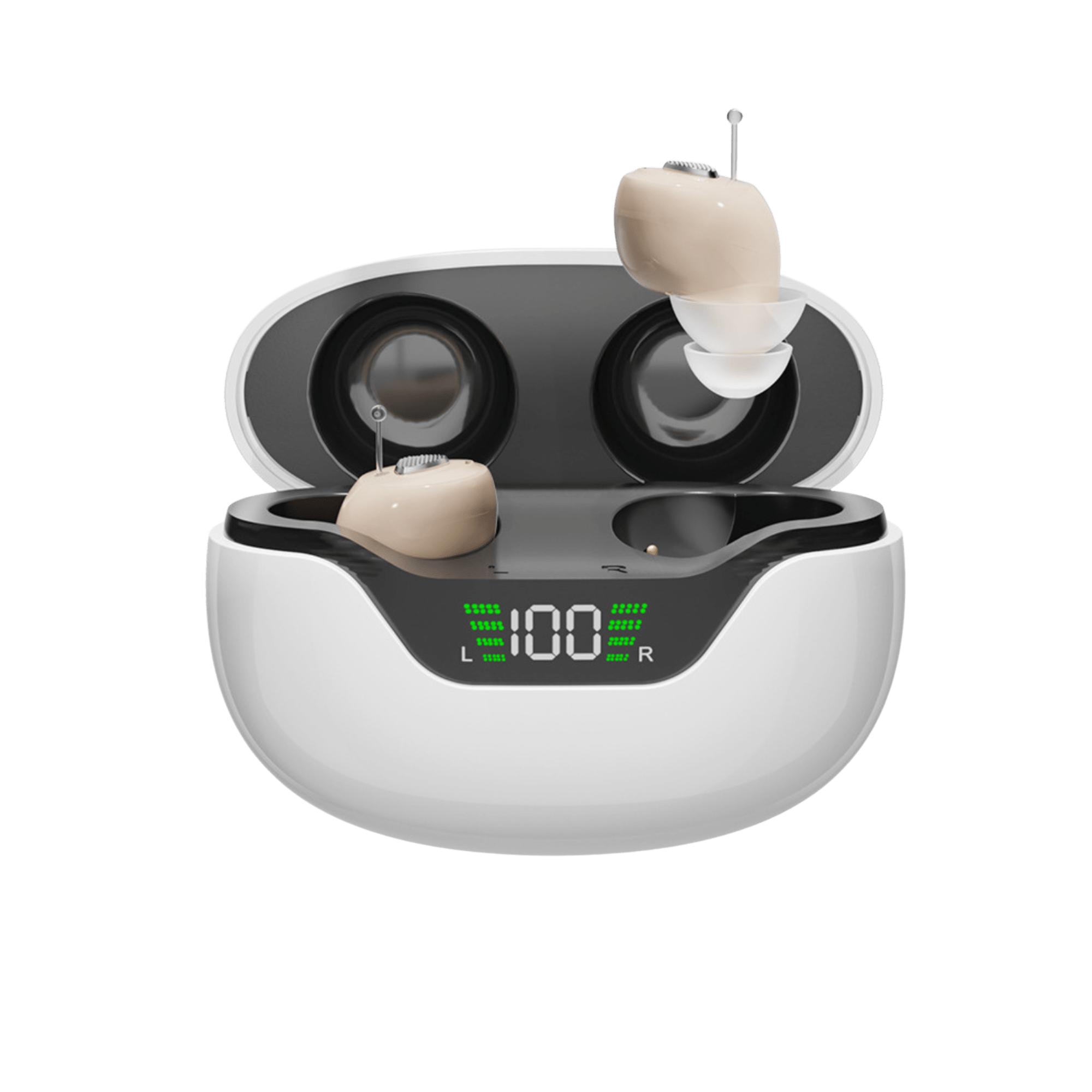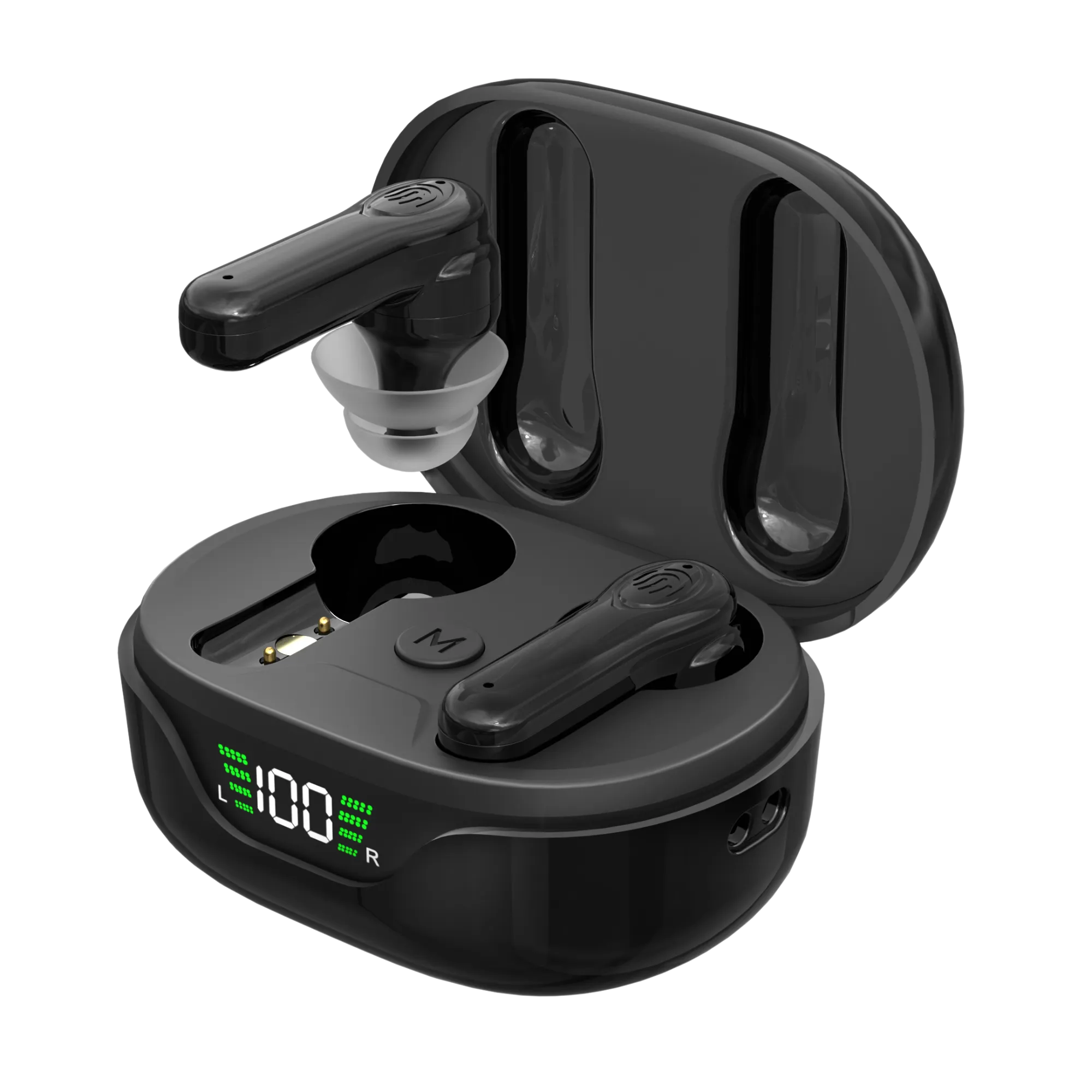Hearing a sudden scream at a high pitch coming from a hearing aid can be a confusing and aggravating experience for the wearer. This effect, which is more often referred to as feedback, is rather common among people who wear hearing aids. The question is, why do hearing aids make that noise? The purpose of this article is to demystify hearing aid feedback by offering some insights into why it occurs, how it affects users, and what can be done to solve it.
What is meant by the term "Hearing Aid Feedback"?
Hearing aid feedback occurs when sound that is produced by the hearing aid speaker and then released into the surrounding environment is picked up by the hearing aid microphone. This loop results in a sound that is similar to whistling or screeching. Hearing aids are designed to reduce the likelihood of feedback as much as possible; yet, there are circumstances and kinds of hearing aids in which feedback can still occur.
What Causes Feedback to Take Place?
To have a better understanding of why feedback occurs with hearing aids, it is necessary to have some background information. The following is a list of the most common causes of squeaking in hearing aids:
Poor Fitting
Feedback is an issue that can arise when a hearing aid does not fit properly. A feedback loop is created when there is space between the ear and the hearing aid because the amplified sound that is exiting from the ear mold is then re-entering the microphone.
A Significant Accumulation of Wax
When there is an accumulation of wax in the ear, the sound that is being amplified by the hearing aid may reflect off of the wax and into the microphone, causing feedback.
Concerns about the Technology
In certain instances, feedback might be the result of a broken or malfunctioning hearing aid. For instance, if the tubing of the hearing aid is damaged in any way—for example, if it is cracked or has a hole—this might allow sound to seep out and be picked up by the microphone.
Several Shifts in Position
Certain motions, such as giving someone a hug or resting down on a pillow, might produce momentary changes in the way the hearing aid fits, which may result in feedback.
Hearing Aid Feedback: Managing It, And How To Prevent It
Now that we understand the cause of the feedback that hearing aids produce, let's have a look at ways to control and eliminate it:
Regular Maintenance
Hearing aids that are not cleaned on a regular basis might contribute to feedback problems. It is possible to considerably lower the likelihood of experiencing feedback by removing wax buildup from the hearing aids and going to frequent ear checkups to resolve any issues caused by an excessive amount of earwax.
Appropriate Conformity
It is essential to check that your hearing aid fits properly in order to avoid experiencing feedback. Appointments with your audiologist or hearing aid provider at regular intervals can assist verify that your hearing aid is properly fitted and is operating at its full potential.
Functions for the Elimination of Feedback
The ability to reduce or eliminate feedback is a common function found on many current hearing aids. These technologies have the ability to detect the feedback loop and then cancel it off before it becomes audible, so successfully removing the scream.
Examination of the Specifics
It's possible that a problem with the hearing aid's technology is to blame if you suddenly start experiencing feedback. It is possible to discover and address any technical issues with your hearing aid by having a trained specialist examine it.
In conclusion, feedback from hearing aids is an annoyance that is also a regular problem for those who wear hearing aids. Users are able to empower themselves to take effective actions to prevent and manage this feedback if they understand the sources of it, which include improper fitting, wax accumulation, technological issues, and changes in position. Hearing aid wearers may enjoy the advantages of their devices without the distracting background noise of a scream by doing normal maintenance on their devices, ensuring that they are properly fitted, utilizing feedback cancellation capabilities, and performing routine technical inspections.
What is meant by the term "Hearing Aid Feedback"?
Hearing aid feedback occurs when sound that is produced by the hearing aid speaker and then released into the surrounding environment is picked up by the hearing aid microphone. This loop results in a sound that is similar to whistling or screeching. Hearing aids are designed to reduce the likelihood of feedback as much as possible; yet, there are circumstances and kinds of hearing aids in which feedback can still occur.
What Causes Feedback to Take Place?
To have a better understanding of why feedback occurs with hearing aids, it is necessary to have some background information. The following is a list of the most common causes of squeaking in hearing aids:
Poor Fitting
Feedback is an issue that can arise when a hearing aid does not fit properly. A feedback loop is created when there is space between the ear and the hearing aid because the amplified sound that is exiting from the ear mold is then re-entering the microphone.
A Significant Accumulation of Wax
When there is an accumulation of wax in the ear, the sound that is being amplified by the hearing aid may reflect off of the wax and into the microphone, causing feedback.
Concerns about the Technology
In certain instances, feedback might be the result of a broken or malfunctioning hearing aid. For instance, if the tubing of the hearing aid is damaged in any way—for example, if it is cracked or has a hole—this might allow sound to seep out and be picked up by the microphone.
Several Shifts in Position
Certain motions, such as giving someone a hug or resting down on a pillow, might produce momentary changes in the way the hearing aid fits, which may result in feedback.
Hearing Aid Feedback: Managing It, And How To Prevent It
Now that we understand the cause of the feedback that hearing aids produce, let's have a look at ways to control and eliminate it:
Regular Maintenance
Hearing aids that are not cleaned on a regular basis might contribute to feedback problems. It is possible to considerably lower the likelihood of experiencing feedback by removing wax buildup from the hearing aids and going to frequent ear checkups to resolve any issues caused by an excessive amount of earwax.
Appropriate Conformity
It is essential to check that your hearing aid fits properly in order to avoid experiencing feedback. Appointments with your audiologist or hearing aid provider at regular intervals can assist verify that your hearing aid is properly fitted and is operating at its full potential.
Functions for the Elimination of Feedback
The ability to reduce or eliminate feedback is a common function found on many current hearing aids. These technologies have the ability to detect the feedback loop and then cancel it off before it becomes audible, so successfully removing the scream.
Examination of the Specifics
It's possible that a problem with the hearing aid's technology is to blame if you suddenly start experiencing feedback. It is possible to discover and address any technical issues with your hearing aid by having a trained specialist examine it.
In conclusion, feedback from hearing aids is an annoyance that is also a regular problem for those who wear hearing aids. Users are able to empower themselves to take effective actions to prevent and manage this feedback if they understand the sources of it, which include improper fitting, wax accumulation, technological issues, and changes in position. Hearing aid wearers may enjoy the advantages of their devices without the distracting background noise of a scream by doing normal maintenance on their devices, ensuring that they are properly fitted, utilizing feedback cancellation capabilities, and performing routine technical inspections.





